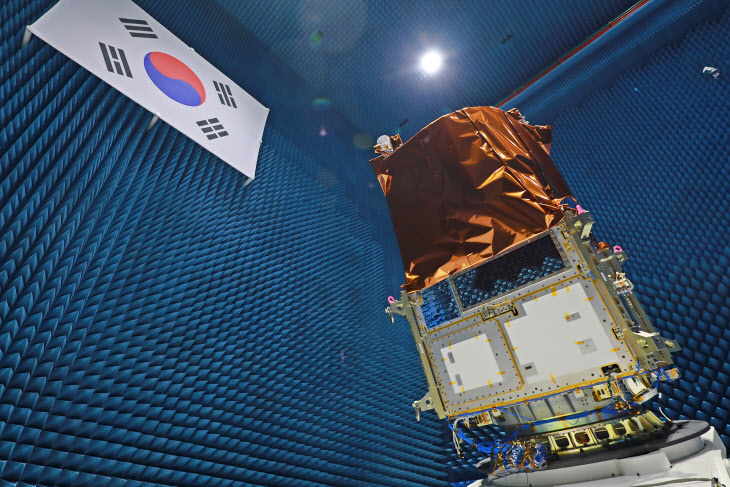| Next-generation medium-sized satellite #1. (yunhap news) |
The launch of the next-generation medium-sized satellite 1 was postponed due to the discovery of an abnormality. The next-generation medium-sized satellite 1 was scheduled to be launched from the Baikonur Space Center in Kazakhstan at 3:7 pm (11:7 am local time) on the 20th.
The Ministry of Science and ICT announced that a problem was found in the’Soyouth 2.1a’ launch vehicle that was preparing to launch at the Baikonur Space Center on the same day, and that it has delayed the launch schedule to check it.
JSC GlavCosmos, a launch service company for the next-generation medium-sized satellite 1, found a problem in the control system of the top of the launch vehicle (Fregot) during the final inspection of the Soyuz launch vehicle system before launch.
The Soyuz 2.1a launch vehicle is a 308-ton class rocket consisting of a three-stage liquid rocket (using liquid oxygen and kerosene) and a top (pregat hydrazine, UDMH), and can put a 4.8-ton payload such as satellites in solar orbit.
The Ministry of Science and ICT explained, “Currently, JSC GlavCosmos is analyzing the cause of the Soyuz projectile’s launch interruption and is checking the system to prepare for normal launch.” “After completion of the work, we plan to determine the launch schedule in the future.”
Korea Aerospace Research Institute’s technical team conducted 50 days of preparation for the launch of the next-generation medium-sized satellite 1, which moved to the Baikonur Space Center on January 22nd.
The next-generation medium-sized satellite 1 was developed with Korea’s own technology, hosted by the Korea Aerospace Research Institute and participated by domestic aerospace companies. 157.9 billion won was invested, including the Ministry of Science and Technology’s budget of 112.8 billion won and the Ministry of Land, Infrastructure and Transport of 4,520 billion won.
The next-generation medium-sized satellite 1 is expected to be used as a 500kg medium-sized satellite’standard platform’. The satellite is equipped with an optical camera with a resolution of 0.5m in black and white and 2.0m in color. After launch, it is expected to be active in solar synchronous orbits at an altitude of 497.8km and provide precise ground observation images, wide-area agricultural and forest conditions observation images, and water resource observation radar images. do.
Sejong = Reporter Kwak Jin-seong [email protected]
View other reporters’ articles>
